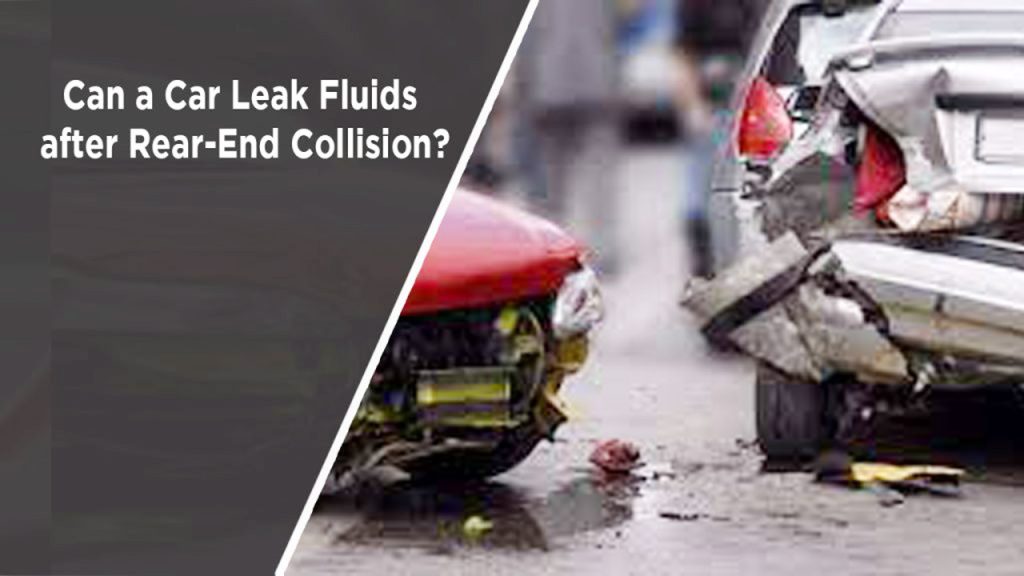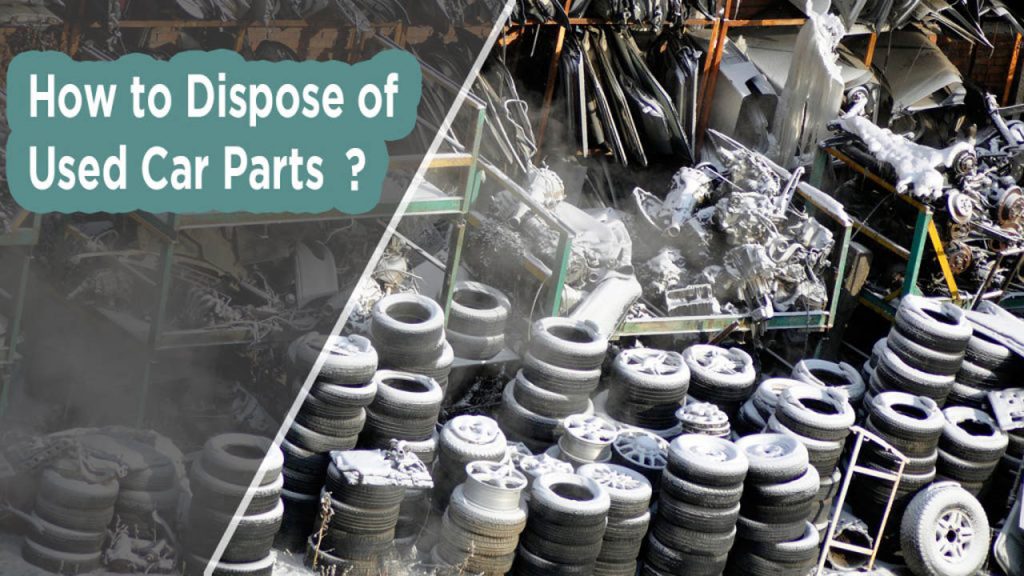Rear-end collisions are some of the most common types of accidents on the road. While the immediate focus is often on visible damage like dents or broken lights, there’s another issue you might not notice right away: fluid leaks.
A rear-end collision can disrupt your car’s internal systems, causing fluids to leak. If you’ve ever wondered whether this is something to worry about, let’s dive into it. I’ll walk you through everything you need to know, from spotting the signs to understanding what might be leaking and how to address it.

Why Do Cars Leak Fluids After a Rear-End Collision?
When a vehicle is rear-ended, the impact can jolt or damage various components, some of which hold or transport fluids. Even a minor collision can create small cracks or dislodge seals, leading to leaks. In more severe accidents, tanks, hoses, or connections can rupture, allowing fluids to spill out.
This issue isn’t just messy—it can signal underlying damage that might lead to bigger problems if left unaddressed.
Common Types of Fluid Leaks After a Rear-End Collision
Let’s take a closer look at the fluids your car might leak after a rear-end collision:
Engine Oil
Engine oil leaks are often caused by damaged oil pans or seals. If the collision impacts the underside of your car or shifts engine components, it could result in an oil leak. Signs include dark brown or black puddles under your car and a noticeable burning smell.
Transmission Fluid
A rear-end collision can damage the transmission pan or cooler lines, causing transmission fluid to leak. This fluid is typically red or pink and may feel slick to the touch. Transmission leaks are serious and should be addressed immediately to prevent costly repairs.
Coolant
Coolant leaks are common after a rear-end collision, especially if the impact affects the radiator or hoses. Coolant usually appears as a bright green, yellow, or orange fluid and can cause your car to overheat if left unchecked.
Brake Fluid
Brake fluid leaks are less common but extremely dangerous. A collision can damage brake lines or seals, leading to leaks. Look for a clear or slightly yellow fluid near your wheels or under the brake master cylinder.
Fuel
In severe collisions, the fuel tank or lines can be damaged, resulting in a gas leak. This is a significant safety hazard due to the risk of fire or explosion. Fuel leaks are often detected by their strong smell.
Power Steering Fluid
Damage to the power steering system can cause fluid leaks. This fluid is usually reddish or light brown and is vital for maintaining control over your vehicle’s steering.
Differential Fluid
In rear-wheel or all-wheel drive vehicles, the rear differential may be impacted during a rear-end collision, leading to leaks. Differential fluid is thick and typically smells like sulfur.
Signs Your Car is Leaking Fluids
Not all leaks are immediately obvious. Here’s how to identify if your car is losing fluids after a collision:
- Visible Puddles: Check under your car for puddles or drips. The color and texture of the fluid can help you identify what’s leaking.
- Unusual Smells: Burning or sweet smells may indicate a fluid leak.
- Dashboard Warnings: Low fluid levels often trigger warning lights on your dashboard.
- Performance Issues: Difficulty steering, braking problems, or engine overheating could point to fluid loss.
- Smoke or Steam: Leaking fluids can burn off when they hit hot components, creating smoke or steam.
Steps to Take if Your Car is Leaking Fluids
If you suspect your car is leaking fluids after a rear-end collision, follow these steps to address the issue:
Step 1: Inspect the Damage
Look under your car for visible leaks or signs of fluid loss. Check the area around the impact for cracks, dents, or dislodged components.
Step 2: Identify the Fluid
Use the color and smell of the fluid to determine what’s leaking. This can help your mechanic diagnose the problem more quickly.
Step 3: Avoid Driving
Driving with a fluid leak can worsen the damage or lead to unsafe conditions. Tow your car to a repair shop instead of driving it.
Step 4: Visit a Mechanic
A professional inspection is crucial. Mechanics can identify the source of the leak, assess the extent of the damage, and recommend the necessary repairs.
Step 5: File an Insurance Claim
If the collision was caused by another driver, their insurance might cover the repairs. Document the damage and provide your mechanic’s assessment when filing a claim.
How Mechanics Diagnose Fluid Leaks
When you bring your car to a repair shop, mechanics use several techniques to pinpoint fluid leaks:
- Visual Inspection: They check for cracks, dents, or loose components in the affected areas.
- UV Dye Test: Adding a UV-reactive dye to the fluids can help trace leaks with a UV light.
- Pressure Testing: For systems like coolant or brake fluid, mechanics use pressure tests to identify weak points.
Preventing Future Issues
Once your car is repaired, there are steps you can take to avoid further fluid leaks:
- Regular Inspections: Check fluid levels and the condition of hoses and seals during routine maintenance.
- Drive Carefully: Avoid sudden stops or high speeds that increase the risk of collisions.
- Address Small Issues Early: Repair minor damages promptly to prevent them from worsening.
Fluid Types and Their Characteristics
| Fluid Type | Color | Texture | Common Location of Leak |
|---|---|---|---|
| Engine Oil | Brown/Black | Slick | Under the engine |
| Transmission Fluid | Red/Pink | Slick | Under the transmission |
| Coolant | Green/Yellow/Orange | Watery | Under the radiator or hoses |
| Brake Fluid | Clear/Yellow | Oily | Near wheels or master cylinder |
| Fuel | Clear/Brown | Watery, Smells Gasoline | Near fuel tank or lines |
| Power Steering Fluid | Reddish/Brown | Oily | Near front wheels or steering system |
| Differential Fluid | Dark Brown | Thick, Smells Sulfur | Rear axle |
My Experience with Fluid Leaks
I remember the first time I noticed a leak after a minor collision. It was a small puddle under my car that I initially ignored, thinking it wasn’t a big deal. However, it turned out to be a coolant leak, and my engine overheated just a few days later. That experience taught me the importance of addressing leaks immediately.
Every car and collision is different, but being proactive can save you from bigger problems.
Conclusion
Yes, a car can leak fluids after a rear-end collision, and it’s not something to take lightly. These leaks can indicate damage to critical systems, potentially leading to more significant repairs or even safety risks.
By knowing what to look for and acting quickly, you can minimize the impact of fluid leaks on your vehicle. Whether it’s identifying the type of fluid, getting professional help, or filing an insurance claim, staying informed is your best tool.
If you ever notice a leak, don’t wait—address it immediately. Your car and your wallet will thank you later.
FAQs
Can a small rear-end collision cause fluid leaks?
Yes, even minor collisions can dislodge seals or create small cracks, leading to fluid leaks.
What’s the most dangerous fluid to leak after a collision?
Fuel leaks are the most hazardous due to the risk of fire or explosion.
How do I identify what type of fluid is leaking from my car?
You can often tell by the color, texture, and smell of the fluid. For example, coolant is usually green or orange, while transmission fluid is red.
Should I drive my car if it’s leaking fluids?
It’s best to avoid driving a car with a fluid leak. Towing it to a repair shop is safer.
Can fluid leaks lead to long-term damage?
Yes, ignoring fluid leaks can cause major issues like engine overheating, brake failure, or transmission damage. It’s essential to address leaks promptly.


